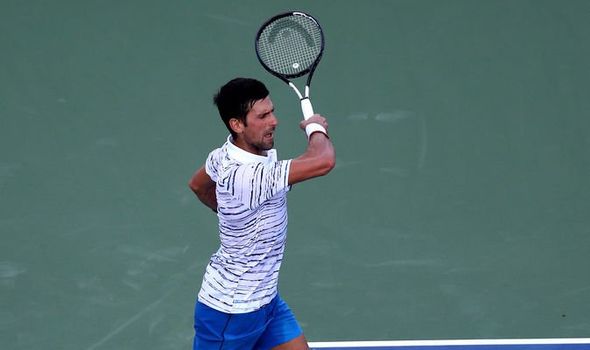By Randy Walker
@TennisPublisher
Being the No. 1 seed at the U.S. Open is a prestigious position and great honor. But when the draw for the tournament is made, what is the difference between being the No. 1 seed and the No. 2 seed? The answer is …. Nothing!
Novak Djokovic has dominated tennis over the last 12 months and, accordingly, has been awarded the No. 1 seed at the U.S. Open for 2019. He has won three of the last four major titles and reached the semifinals of the fourth at Roland Garros. He is head-and-shoulders the best player in the world and, by right, has earned the No. 1 seed in Flushing Meadows. But Djokovic got no favors, no luck or no advantage as the No. 1 seed when the draw was made for the 2019 U.S. Open where he was drawn to potentially face the No. 3 seed Roger Federer in the semifinals. And, to boot, in the quarterfinals, he was drawn to potentially face the No. 5 seed Daniil Medvedev in the quarterfinals, the highest seed possible for that round, and the hottest men’s player on the ATP Tour this summer. By contrast, Rafael Nadal, the No. 2, drew the less intimidating No. 4 seed Dominic Thiem in his half of the bottom half of the draw.
One would think that earning the No. 1 ranking and seeding at events would earn you some sort of advantage or reward, but unlike other sporting contests, in tennis, it does not. While the No. 1 seed is placed on the opposite side of the draw from the No. 2 seed, and not in the quarter of the draw as the No. 3 or No. 4 player in the world, or in the eighth of the draw of the No. 5, No. 6, No. 7 or No. 8 seeded player, the positioning of these seeds are decided “by lot” or by a random selection. There really is no difference between being seeded No. 1 or No. 2, or between No. 3 and No. 4, or between No. 5, No. 6, No. 7 and No. 8 and between the No. 9 through the No. 16 seeds and between the No. 17 seed through the No. 32 seed.
The issue is particularly sensitive recently with men’s tennis being dominated by just three players – Djokovic, Nadal and Federer – and the player who draws one or the other in the semifinals is at a disadvantage in likely having to beat two of the three win the title. Should the No. 1 seed Djokovic have earned the right to not face the No. 3 seed Federer in the semifinals or should, as the No. 1 seed, be “rewarded” in not having to draw the No. 3 seed in the semifinals, in this case, Federer?
Wimbledon, controversially, seeded Federer at No. 2 and Nadal at No. 3 earlier this summer, in reference to Federer’s better track record of success on grass courts than Nadal, despite Nadal’s holding the No. 2 ATP ranking. Had Federer not randomly drawn Nadal in his half of the draw, it would have been a massive advantage to him.
The most well-known draw in sports – or “brackets” – is from the NCAA Basketball tournament, the American collegiate basketball championships, where the draw specifically places the No. 4 seed to play the No. 1 seed in the semifinals of each regional and the No. 2 seed to play the No. 3 seed. The National Football League also rewards the No. 1 seed in each division with not only home-field advantage but also the right to play the lower-ranked player in the first round of the divisional playoffs. This also occurs with the Major League Baseball playoffs. Shouldn’t this also apply to tennis?
Earlier this week, when talking to Marc Berman with the New York Post newspaper, I suggested he talk about when this random “by lot” selection for the position of the No. 3 and No. 4 seed started and suggested he talk to Brian Earley, the long-time U.S. Open referee, who not only oversaw the making of the U.S. Open draw, but thousands of other draws at other tennis events he ran. Coincidentally, just after I hung up the phone, I saw Earley on the grounds of the USTA Billie Jean King National Tennis Center during his consulting position for the U.S. Tennis Association and asked him when this started. I was under the impression that the rule used to be that the No. 1 seed always drew to play the No. 4 seed in the semifinals and the No. 2 seed drew to play No. 3 and so on, like the NCAA Basketball Tournament and that, until relatively recently, it changed. However, Earley told me that it was always the rule and that the seeding positions have always been decided “by lot.” Earley stated to me that the rule was created by Colonel Nick Powell, a pioneering tennis official whom you can read more about here: https://www.dailyprogress.com/sports/tennis-tips-use-the-code-on-the-court/article_0da27a1a-1d3a-11e5-ab2b-9f84f2d89837.html Earley told me that Powell felt that, while creating “The Code” that the seeding positions when making a draw needed to be drawn randomly so as not to have the same players drawn to play against each other each week, or at each tournament. This certainly makes sense, but is it fair? It’s certainly up for discussion.

